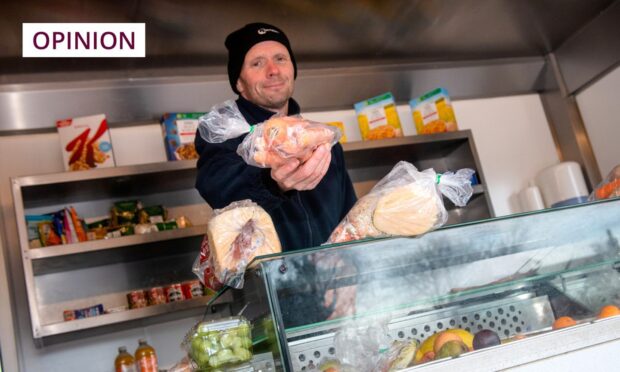As an organisation, SHMU (Station House Media Unit), is probably best known for its community FM radio station.
In recent years, we have been developing a strong programme around community TV and film, with the objective of training young people and adults who wouldn’t otherwise have the opportunity, as well as developing a workforce for a new industry for the north-east of Scotland. We have also been developing how we use podcasts and photography as part of our engagement and projects, as we’ve recently started to build websites with communities in regeneration areas.
Through these different opportunities and platforms, one of our core aims has always been to ensure that often marginalised communities have a voice. These platforms allow us to amplify the experiences, concerns and aspirations of those communities who wouldn’t normally be heard.
That is why we are passionate about being involved in Challenge Poverty Week (Oct 2-8). The annual week-long campaign was initiated by the Poverty Alliance in 2013, to “highlight the injustice of poverty in Scotland, and to show that collective action based on justice and compassion can create solutions”.
Poverty has brutal impacts on individuals and communities. Year on year, we’re seeing an increase in that impact of poverty in our city. But poverty is not new to Aberdeen – it has been the scourge of many of our communities, even during the height of the region’s affluence. It is part of the reason why SHMU was created 20 years ago – to give a platform to those affected by and experiencing poverty; to challenge the status quo and demand change.
We believe that there is a positive future for Aberdeen and all of its communities. Through the development of a Challenge Poverty Week in Aberdeen, we believe that we, along with our partners, are modelling the change we need to see in the city.
We need to first be realistic and recognise the reality of life in Aberdeen, across all our communities. This shouldn’t be a case of negativity and pessimism, but we won’t tackle poverty and the other challenges we face if we don’t stand up and recognise the task that is in front of us. This must include understanding the experiences of those people and communities taking the brunt of poverty and inequality in Aberdeen.
At the same time, we must celebrate our communities and what is working well. That is why we have invited elected officials and policymakers to a film screening event on October 6 to share some of those experiences and aspirations.
Communities need more control, resources and responsibilities
There is also a need for partnership and collective voice to tackle poverty. The voluntary third sector is amazing at working in partnership – most charities would not survive without relying on mutual support between organisations.
Many charities have been set up because ordinary people, members of our communities, have been concerned or angry enough about an issue that relates to poverty, whether that be homelessness, food or fuel poverty, or children or adults with limited or no opportunities. There is, therefore, a natural alliance between such organisations – we believe, collectively, we can help make the change we want to see.
We are also working with the likes of Aberdeen City Health and Social Care Partnership and Community Planning Aberdeen during the campaign. Large public services continue to have a key role to play in tackling poverty, despite pressure on budgets. We understand the stress that public bodies are under, but it’s crucial that further cuts do not fall onto the marginalised and vulnerable in our society.
As well as ‘thinking big’, we also need to be working at very local levels
This year’s Challenge Poverty Week in Aberdeen is a collaboration with charities whose aims are intrinsically tied to tackling poverty, such as Cfine, Abernecessities and Cyrenians. The campaign also brings in smaller organisations, such as those funded by the Fairer Aberdeen Fund, that are at the heart of communities most affected – like Tillydrone Community Flat, and the Fersands and Fountain, and Printfield Community Projects.
We believe that as well as “thinking big”, we also need to be working at very local levels. For communities to flourish, they need more control, resources and responsibilities.
We will not tackle poverty in a week, nor in a year or five years. But the tide must turn, and we must start, as a collective, investing in and developing a better future for our communities, city and region.
Murray Dawson is chief executive of Station House Media Unit (SHMU)

